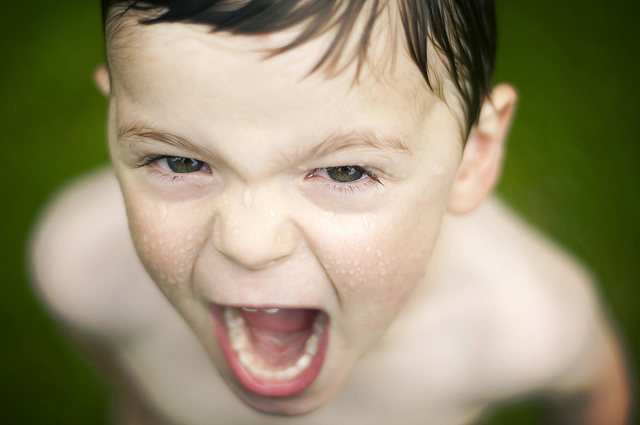How do you decipher a toddler’s anger?

Find this article published in the January/February 2017 issue of Vivre Mieux magazine.
« Aaaaaaaaaaaaaaaaaaaaaah! » screams 2-year-old Romane at the top of her lungs when her dad refuses her a second slice of pie. At the heart of the Sunday family meal, the little girl rolls around on the floor as her parents look on helplessly. « It’s a whim! It’s an act! You’ve got to crack down, or you’ll turn her into a child-king! » cries mother-in-law. Taratata! But what if it’s simply an explosive reaction to an unsatisfied need? And what if saying that a child is having a tantrum is just an abusive judgment on the part of the adult, the manifestation of a prevailing adultomorphism?
Over the past fifteen years or so, neuroscience research has radically changed the way we look at young children: they are no longer seen as little tyrants, evil by nature, to be (re)trained at all costs, but as vulnerable, immature, developing human beings. Indeed, if young children throw tantrums, it’s because their prefrontal brain isn’t mature enough to regulate their emotions and calm their strong reactions. What’s more, before the age of 3/4, their emotional and archaic brain predominates (the one that enables mammals to survive and confront the dangers of their environment). So, when one of their basic needs for affection, attention, tenderness, food or sleep is not met, the toddler is plunged unwillingly into a state of alert from which a strong emotion emerges. Each tantrum is then experienced by the child as an uncontrollable and particularly trying emotional explosion.
As an adult, how do we react to such behavior? Research has shown that emotional mistreatment of children (humiliating them, shouting at them, shaming them, threatening them, punishing them) slows down the maturation of their emotional brain. On the other hand, all practices imbued with humanity, empathy and tenderness encourage the maturation of the child’s brain, helping him or her, day after day, to better regulate their emotions. In this dynamic, the authoritarian education of our grandparents has given way to positive education, whose three essential ingredients are as follows:
-Identify what unmet needs lie behind this anger
-If the mustard gets to your nose, put your foot down: isolate yourself or take the time to breathe and count to 10. The aim? Disconnect from your emotions and reconnect with your reasoning.
-When you feel your child is nervous, ready to explode at the slightest annoyance, recharge his reservoir of affection with a hug and praise.
In the end, the best way to guide your child along the path of reason is… to set an example! Start by controlling your own emotions and, if you’re ever angry yourself, don’t give in to explosive behavior. In short, « do as I do, not as I say!
